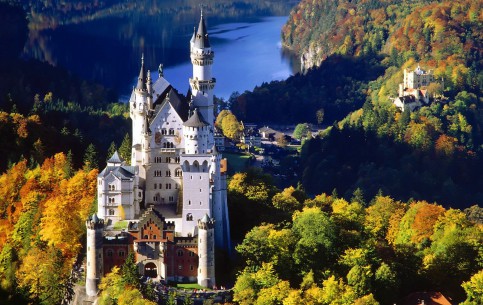
Bavaria - a paradise for mountain tourism, water sports and skiing. Magnificent nature, clean air, historic attractions, cozy hotels and lifestyle attract travelers from all over the world
Bavaria (Free State of Bavaria) - the largest land area of Germany is located to the south-east of the country. The state is divided into seven administrative districts - Lower Bavaria, Upper Bavaria, Swabia, Upper Franconia, Middle Franconia, Lower Franconia, Upper Palatinate. The population consists basically of three ethnic groups – the Bavarians, the Swabians and the Franks. The capital city is Munich. Other major cities are - Nuremberg, Augsburg, Würzburg and Regensburg.
The nature of Bavaria is magnificent. Here, in the foothills of the Alps there are the highest mountain of Germany - Zugspitze Mount (2963 m), picturesque valleys of the Danube and the Main, numerous lakes of amazing beauty, the Bavarian Forest with the National Park and many other attractions. Not surprisingly, that this is where King Ludwig II built his famous castles, to realize a dream of romantic world or German knighthood. Hospitable land of Bavaria has preserved many remarcable monuments of architecture and history: the palaces of Louis II - Linderhof, Neuschwanstein, Herrenchiemsee, Festa Coburg Castle, the residences of archbishops in the cities of Wuerzburg and Bamberg, and many others.
Bavaria is one of the oldest states of Europe. Conquered by the Romans, then by the Germans, it gave birth to the people who came out of mixing the Romans, the Celts and the Germans. Until 1950 Bavaria was a rural land. Among other crops they grow hops here for famous Bavarian beer, brewed according to the law of the purity of beer, adopted back in 1516. Bavarians are proud of their past and jealously preserve native traditions, their own dialect. Bavaria has its own hymn and flag; folk costumes are to wear not only on holidays.
Bavaria - a paradise for mountain tourism, water sports and skiing. Magnificent nature, clean air, historic attractions, cozy hotels and lifestyle attract travelers from all over the world.
Related objects
 |
|
 |
|
 |
|
 |
|
 |
|
 |
|
 |
|
 |
|
 |
|
 |
|
 |
|
 |
|
 |
|
 |
|
 |
|
 |
|
 |
|
Germany • News
![]() Germany • 2013-09-03
Germany • 2013-09-03
Topical themes at Brazil’s largest travel trade show ...
![]() Germany • 2013-02-13
Germany • 2013-02-13
ITB Berlin: focus on business travel
...
![]() Germany • 2013-02-13
Germany • 2013-02-13
ITB Berlin Convention: focus on CSR
...
![]() Germany • 2013-02-12
Germany • 2013-02-12
Important impact on tourism: Berlinale 2013
...
![]() Germany • 2013-02-11
Germany • 2013-02-11
eTravel World at ITB Berlin: in tune with the digital age ...

